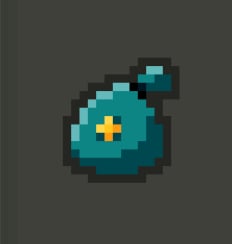Have you tried baking bread in your Dutch oven? I mostly use mine for braises and potroasts but it does work for bread too which is quite wild!
chonglibloodsport
Not mentioned in the summary is joint issues. Relaxin is a hormone produced by the corpus luteum within 2 weeks of ovulation (rising even further during pregnancy). This hormone softens joints, increasing flexibility and helping to prepare for giving birth. Unfortunately it also increases the risks of joint injuries, especially for knees and ankles.
No, a ton LESS asphalt and cement because it’s got narrow, 1-way streets (think less than half the width of a standard suburb 2-way street), no driveways and narrow sidewalks. It also has mixed housing (some single family, some duplex, some multiplex) and sometimes even has houses placed behind the ones near the street, with a shared walkway allowing access to the back.
The problem of suburbia is that it’s very low density, isolated from the rest of the city (so you have to drive just to get groceries), far from public transit, and unsafe for children to walk to school. Streetcar suburbs have none of these issues. They’re:
- high density because houses sit on narrow lots much closer together and very close to the sidewalk, with only a tiny front yard for gardening or planting trees
- much smaller and embedded within the fabric of the city, with a straight grid of alternating 1 way streets that have cars parked on them, heavily discouraging through traffic while keeping houses very close to small businesses
- close to public transit (just walk a few mins to the end of the street and catch a streetcar or go down the steps to the subway platform)
- have small bars, cafes, restaurants, shops, and grocery stores within a few minutes walk for anyone to get groceries or relax without needing a car
- much safer for children due to the slow, narrow, 1-way streets and the total absence of driveways (which are very dangerous to small children who aren’t cautious enough around cars backing out)
- also much safer due to the closeness of front doors to the sidewalk. Bad actors can’t grab kids without being seen or make a quick getaway due to the slowness of the street
At first I saw the pink as the foreground and the forks as some kind of weird, wet background. Then I noticed the shape of the forks and everything flipped!
I love my Le Creuset dutch oven. It’s just like you said (ingredients + 6-8 hours) but I add a stovetop browning step at the beginning followed by a deglaze, then add the ingredients, lid on, and into the low oven until fork tender!
No because Anthony Bourdain also took his own life. Proving that they’re… dun dun DUN! The same person!
White flight can’t explain why suburbs suck today compared to the ones from 70 years ago (when racism and white flight was arguably much more common). Car-centric planning was driven by auto makers and overzealous urban planners obsessed with the idea of highly specialized single-purpose zoning (think SimCity / Factorio nerd) rather than livable, walkable communities. The most desirable and expensive places to live in Toronto are illegal to build because of these boneheaded zoning laws.
Girls are outpacing boys in school in most countries around the world but this advantage for women goes away in the workforce.
Private security industry has been booming in the wake of Luigi. Sure, not as powerful as all the stuff my pictures represent but plenty to slow things down. If Luigi-style attacks became a popular sport then we’d soon see martial law enacted.
Because the guys with guns stand between you and the elderly dudes?



Yeah sourdough is the way to go if you really get into baking bread. It’s a lot more finicky and tricky to learn though, plus it’s a commitment to keep a starter going.